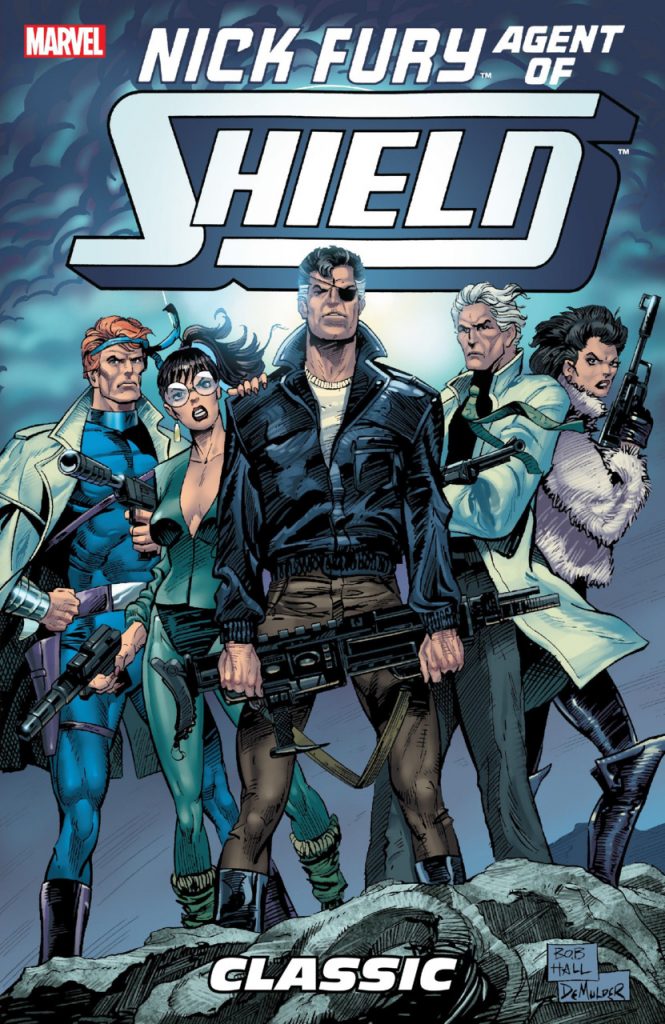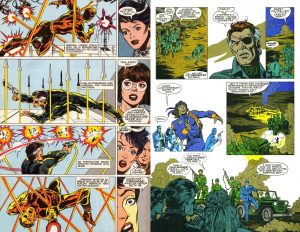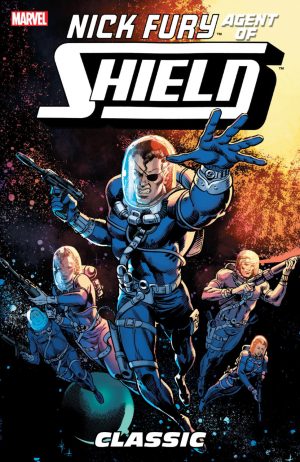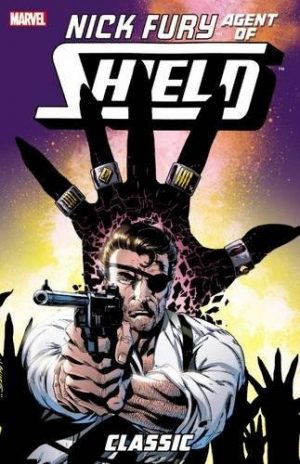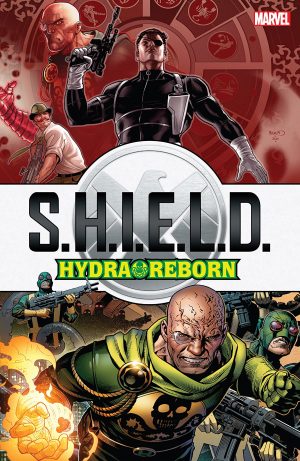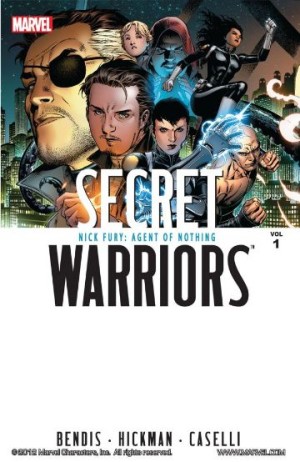Review by Ian Keogh
The material in this collection and its sequel comes from the longest running S.H.I.E.L.D. series in the feature’s history, spanning the late 1980s and the early 1990s. It was prompted by the success of Nick Fury vs. S.H.I.E.L.D., a taut action thriller written by Bob Harras, who had a further feature length S.H.I.E.L.D. story in him, and it opens this collection.
He picks up on several plot points from his previous story, most promptly addressing the inconvenience of his disbanding S.H.I.E.L.D. at the end of it. In story terms that was a year previously. Harras takes the same approach as before, keeping readers informed of what the villains are up to, while Fury and companions remain ignorant. The plot eventually trails back to World War II, and a first encounter with aliens, and while it has its moments, they’re few and far between, sunk within ponderous introspection and a near biblical word count. Although later rectified by others, Harras again takes the easy emotional button pushing option of disposing of a long standing supporting character to bolster the credentials of his villains. He’s aiming for the sort of high octane thriller that’s boosted the James Bond franchise in the 21st century, but pulls his story in too many directions and it loses focus.
By the time he takes over the writing midway through the book, D. G. Chichester has the legacy of a cast largely created by Harras and a reformed global super spy organisation. He escalates the rivalry between S.H.I.E.L.D. and the CIA, and creates a credible new threat, if one that’s on the arch side, who has Fury and cohorts running around the globe with the discord he creates. What’s not as credible is that his novice henchmen consistently prove a problem for trained agents, and that the upper echelons of military and secret service power would succumb so easily to simple blackmail.
Mundane artwork is a consistent drag on these plots, with Kim De Mulder the star turn. Ostensibly inking over Keith Pollard’s pencils, he can’t affect the very standard layouts, but provides a more three dimensional look to features, and the chapters where he’s finishing the art from looser layouts look much better. The best looking of all is the final chapter drawn by Cam Kennedy, and it’s also the best story in the collection, much of that resting on it not being stretched out too far. Alan Grant sends Fury to Orkney in a nutty plot again referencing his World War II experiences and mixing that with shamanism.
Harras and Chichester both return in volume two.
